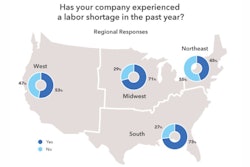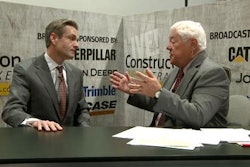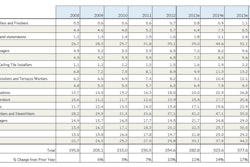There are concerns about worker shortages across all sectors of the construction industry. The Great Recession took a heavy toll on the number of skilled workers, with many exiting the industry — voluntarily or involuntarily — in search of work in other markets. Many have been unwilling to return to what is still perceived as a volatile business sector.
Then there is the next generation of workers, whose general perception of construction is a bunch of burly guys with hard hats and shovels laboring for long hours in the dirt and in all types of weather. The industry has struggled for years to shed this image with limited success.
Clearly, construction is not the same business it was even five years ago. It has quickly evolved into an increasingly high-tech field with a heavy focus on products, technology and techniques that can help to streamline operations, boost equipment and worker productivity and cut time to project completion. Consider the growing implementation of BIM software, mobile apps for field applications, lean construction practices and more.
Also consider the sophistication of the latest models of construction equipment. Advanced electronics coupled with expectations for greater operator comfort and productivity have produced a generation of machines that is as complex as any high-end luxury car and almost as comfortable to run.
The tools of the trade have evolved well beyond that perceived shovel. Today’s construction equipment covers a broad spectrum of types and designs incorporating such features as custom-tailored power and work modes; factory installed telematics systems that monitor everything from machine location, to fuel consumption, to tons of material moved; satellite-based grade control systems that deliver fine-grade capabilities; customized work settings that can be preset to individual operator preferences and restored at the touch of a button; automotive-style cabs with high-efficiency HVAC systems — the list goes on and on.
The industry’s challenge is how to change perception to reflect the current reality. As history has shown, this is not an easy process. But if it has any hope of attracting new blood into the workforce, the industry needs to put a concerted effort behind educating prospective employees early and often.
One method that has proven effective is to take the message to the schools, especially at the high school level where young adults are just beginning to develop career objectives. With many school districts eliminating or substantially cutting back on tech ed programs, it’s become more critical to educate students in the opportunities for a rewarding, high-paying job in the construction field. This message should be backed up by technology demonstrations, hands-on operating time, project visits, work study/apprenticeship programs and other up-close and personal experiences that help to reinforce what the industry has to offer.
Educating older workers presents unique challenges, but is certainly achievable. Opportunities exist via adult education and workforce development programs, working directly with employment agencies, participating in job fairs, etc. Also consider hosting a hands-on programs targeted to smaller children. The kids get a chance to learn about, explore and, in some cases, operate equipment. In the process, you have the ideal forum to share information on employment opportunities with their parents, guardians and other adults who attend with them. The chance to host a fun event for kids and reach out to the next generation of workers — talk about a win-win situation!



















